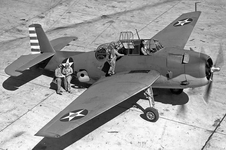Wild_Bill_Kelso
Senior Master Sergeant
- 3,231
- Mar 18, 2022
Two of the F4F pilots survived as PoWs (at least for a time) so the number killed is 16 to 12. 27 Zeros were lost from all causes vs 31 F4Fs.
Lundstrom notes that 24 Zeros ended up in the water and 16 pilots died. He notes that 23 F4Fs ended up in the water and 12 pilots died.
He notes that 15 Zeros were shot down (included in the above) and 13 F4Fs were shot down (included in the above).
I'm not sure what conclusions we can make from this. I suppose we could examine the fate of each pilot that was shot down and decide if armour and/or SS tanks were a factor.
I'm sure it was a factor. But I think these numbers help make clear, it was not as much of a factor as is sometimes portrayed. It's not like the Zeros were made of matches and kindling wood while the Wildcats were flying bar-bells.
The A6Ms were much more agile and had better performance. And 20mm cannons. The F4Fs were tougher and had more ammunition, and probably more radios. It more or less equaled out, but this was later in the year (Santa Cruz was in Oct 1942), once the Americans had improved their tactics. In early 1942 the outcomes were much more in favor of the Japanese (against both US and British / Commonwealth forces).
Last edited:


